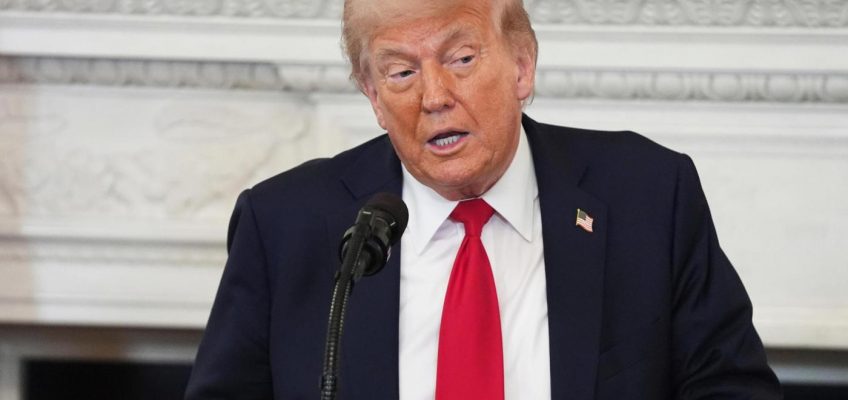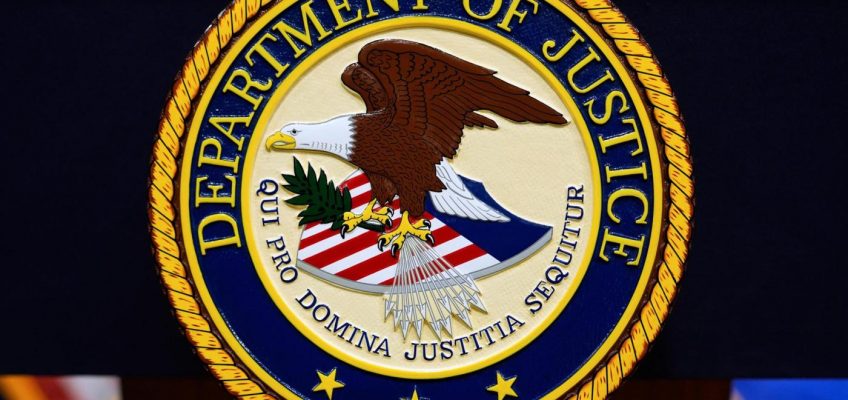By SEUNG MIN KIM and MARC LEVY, Associated Press
WASHINGTON (AP) — President Donald Trump and Sen. David McCormick of Pennsylvania will jointly announce roughly $70 billion of energy investments in the state Tuesday as the president travels to Pittsburgh for a conference with dozens of top executives to promote his energy and technology agenda.
FILE – Republican Pennsylvania Senate candidate David McCormick, left, walks on stage to greet Republican presidential candidate former President Donald Trump, at a rally in Harrisburg, Pa., July 31, 2024. (AP Photo/Matt Rourke, File)
The Pennsylvania Energy and Innovation Summit will be held at Carnegie Mellon University, and it comes as the state’s political and business leaders are working to forge the city into a hub for robotics, artificial intelligence and energy.
Trump has repeatedly pledged U.S. “energy dominance” in the global market, and Pennsylvania — a swing state critical to his wins in 2016 and 2024 — is at the forefront of that agenda, in large part due to its coal industry that the Republican administration has taken several steps to bolster.
Neither the White House nor McCormick’s office gave breakdowns of the $70 billion or what the investments entail.
McCormick, a Republican first-term senator who is organizing the inaugural event, says the summit is meant to bring together top energy companies and AI leaders, global investors and labor behind Trump’s energy policies and priorities. He says the investments will spur tens of thousands of jobs in Pennsylvania.
“Pennsylvania is uniquely positioned because of abundant energy, of incredible skilled workers, technology,” McCormick said in a Fox News interview Monday promoting the summit. “We need to win the battle for AI innovation in America, and Pennsylvania is at the center of it.”
The list of participating CEOs includes leaders from global behemoths like Blackstone, SoftBank, Amazon Web Services, BlackRock and ExxonMobil and local companies such as the Pittsburgh-based Gecko Robotics, which deploys AI to bolster energy capacity. Gov. Josh Shapiro, a Democrat, will also attend.
Administration officials speaking at the summit include White House crypto czar David Sacks, Commerce Secretary Howard Lutnick and Energy Secretary Chris Wright.
In the Fox News interview, McCormick credited his wife, Dina Powell McCormick, with the idea for a summit. Powell McCormick served as Trump’s deputy national security adviser in his first term and is a former Goldman Sachs executive who is now at BDT & MSD Partners, a merchant bank.
Pittsburgh is home to Carnegie Mellon University, a prestigious engineering school, plus a growing industry of small robotics firms and a so-called “AI Avenue” that’s home to offices for Google and other AI firms. It also sits in the middle of the prolific Marcellus Shale natural gas reservoir.
Related Articles
Senate confirms Trump’s first judicial nominee of his second term
A chaotic raid, 360 arrests, and a tragic death: What happened at California’s Glass House Farms
US imposes a 17% duty on fresh Mexican tomatoes in hopes of boosting domestic production
Trump administration says it won’t publish major climate change report on NASA website as promised
How Trump plans to dismantle the Education Department after Supreme Court ruling
Pennsylvania has scored several big investment wins in recent months, some of it driven by federal manufacturing policy and others by the ravenous need for electricity from the fast-growing AI business.
Nippon Steel just bought U.S. Steel for almost $15 billion, getting Trump’s approval after pledging to invest billions alone in U.S. Steel’s Pittsburgh-area plants.
Amazon will spend $20 billion on two data center complexes in Pennsylvania, with more to come, while a one-time coal-fired power plant is being turned into the nation’s largest gas-fired power plant to fuel a data center campus. Meanwhile, Microsoft says it is spending $1.6 billion to reopen the lone functional nuclear reactor on Three Mile Island under a long-term power supply agreement for its data centers.
Shapiro, elected in 2022, has been pushing for the state to land a big multibillion-dollar industrial project, like a semiconductor factory or an electric vehicle plant.
In his first budget speech, Shapiro — who is viewed as a potential White House contender in 2028 — told lawmakers that Pennsylvania needs to “get in the game” and warned that it would take money.
He didn’t land a mega project, but he instead has worked to play up big investments by Amazon and Microsoft, as well as Nippon Steel, as he prepares to seek a second term.
Levy reported from Harrisburg, Pa.




